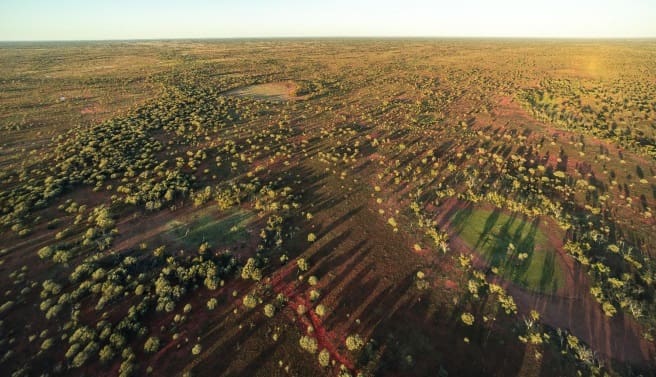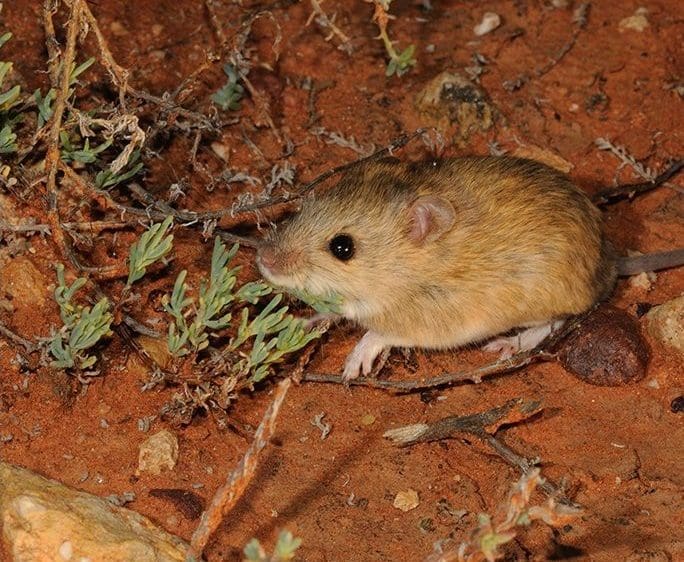
Arid woodlands on Thurloo Downs. Image – A.Pike, DPE.
WESTERN New South Wales pastoralists have criticised the State Government’s purchase of Thurloo Downs Station to form a new national park at a rumoured cost of almost $120 million.
NSW Premier Dominic Perrottet said the 437,394 hectare site between Tibooburra and Bourke will become the third largest national park in the state and a major new tourism drawcard for the region.
“This is the largest ever single parcel of land to be acquired for the national park estate in NSW.
“It will provide yet another reason for people to venture out and explore this part of the state, driving tourism dollars in the region and at every stop along the way,” Mr Perrottet said.
“The economic benefits of this are far reaching, with our national parks contributing around $18 billion and 74,000 jobs to the state economy every year, with three quarters of that going directly to regional areas.”
However, pastoralist Lisa O’Connor at Nundooka Station near Packsaddle told Sheep Central she was concerned about the impact the sale of the sheep and cattle station would have on removing workers from the area, downgrading demand for services, depopulation and pest control.
She had been told the property was bought from owner Peter Hughes for $110 an acre, putting the purchase price at about $118.9 million. Sheep Central has been unable to confirm Ms O’Connor’s price claim.
“$110 per acre maybe would have been better spent on the healthcare system!” Ms O’Connor commented on the Pastoralists Association of West Darling Facebook site.
“It (the price claim) comes from somebody that knows; I’m 99 percent sure it’s correct.”
She queried whether the local community was consulted about the sale, which will ultimately impact it.
“There’s the shearing contractor, there will be no more sheep there to shear.
“Therefore the truck driver won’t have a job to cart the wool out of there, nor will the stock carrier have the job to cart the animals out of there,” she said.
“It’s all very well to say tourism and whatever, and tourism is very heavy during the Winter, but they don’t come out here during the Summer.
“Whereas there would have been a couple of families on these places that they’ve bought and therefore there will be less kids for School of the Air.”
Ms O’Connor said the sale is a “tragedy” and noted that that after decades of pastoralism Thurloo Downs still retained its native plant and animal diversity. But she was concerned that under national park management the livestock watering system on the land would be destroyed, pushing kangaroos onto neighbouring land.
“When they pull out the man-made water and fill in the dams, where do you think all the animals will go for a drink? Next door to pastoral stations.
“I’m worried about the future for our kids, our grandkids … where is it going to end?”
Ms O’Connor said at neighbouring station Mt Westwood (and nearby Avenel and Teilta) all the receiving tanks and troughs were pulled up and bores were disabled after being bought for national parks.
“Every tank and trough that was built next door to here is gone.”
PAWD councillor Lachlan Gall acknowledged that vendors are fully entitled to extract as much value from their property sale as they possibly can, but the purchase price of Thurloo has “fired up” people.
“There are serious questions as to whether the taxpayers of NSW are getting value for money out of these recent purchases that need to be answered by the government.
“The purchase of a number of stations in far west NSW for national parks is a crushing blow for young aspiring pastoralists who no longer believe that buying their own property is within their reach,” he said.
“There are also questions about the capacity of NPWS to manage these new parks, and whether economic activity generated by additional tourist visitation will ever get anywhere close to replacing the loss of income from agricultural production.”
Mr Gall said the road network in far west NSW will need to be improved to encourage tourists into the area.
“Sealing of The Cut Line (Wanaaring – Tibooburra) and the Mutawintji Road will be a major boost for tourism in far west NSW.”
He said in November 2021 PAWD wrote to NSW’s Environment Minister protesting the State Government’s purchase of far west NSW properties for national parks.
A haven for 50 threatened species

A sandy inland mouse (Pseudomys hermannsburgensis) Image – J Val, DPE.
Minister for Environment James Griffin said the acquisition of Thurloo protects globally significant wetlands, vast outback ecosystems, and provides a haven for about 50 threatened species.
“Securing a site this big for addition to our national park estate is a once-in-a-lifetime opportunity for the people of NSW.
“Protecting a property of this scale in perpetuity means we conserve bigger populations of more species, including some of the most endangered,” Mr Griffin said.
“What’s even more extraordinary, is that when combined with the adjacent Narrieara-Caryapundy National Park and the nearby Sturt National Park, our national parks now protect an almost completely connected area of about one million hectares west to the South Australia border.
“We want this park to be a drawcard for visitors and an asset to the entire local community,” he said.
“Far from keeping people out, we’ll invest in the jobs and infrastructure to welcome people in to walk, explore, camp and see what a beautiful part of the landscape it is.”
The State Government said the National Parks and Wildlife Service will engage additional staff to manage the property and deliver $4 million in capital works to support park management and visitor infrastructure such as campgrounds, day-use areas, observation points and outback driving routes.
Over the next two years, the service will ramp up feral animal and weed control as part of the largest ever feral pest control program in NPWS history, undertake ecological surveys and plan visitor infrastructure while the property transitions from pastoral station to national park.
Thurloo, together with neighbouring Narriearra-Caryapundy National Park, hosts a significant portion of the Bulloo Overflow floodplain, which is a huge wetland at the end of one of Australia’s last free-flowing rivers, the Bulloo. After rains, these wetlands support hundreds of thousands of birds, fish and other animals, including mass communal nesting events for pelicans, egrets and terns.
Thurloo is located in the traditional country of the Karenggapa and Parundji people, and the property has extensive Aboriginal cultural heritage with evidence of artefacts including hearth remains, flakes, grinding plates and other items of significance. NPWS will work closely with the Aboriginal community to protect these important cultural sites. The new park is expected to open to visitors from 2025.
Click here for more information about Thurloo Downs.

Interesting Bill Gates becomes the largest private landowner in the US. How many Dutch farmers will be forced from their land? National parks being created from prime farming lands. What possibly could go wrong?
Well done to Peter Hughes for the sale of his properties to the people of NSW. He deserves the price he has been paid for the work and dedicated care he has put into looking after the land. I can say personally the scenery and animals on the property will thrill future visitors.
Well done NSW!
When people started using native pastures in arid land for populations of introduced animals beyond the ‘natural’ carrying capacity of the land, it’s doom was fixed.
Charles Darwin commented in a related context.
Running sheep in arid country is a no-brainer and should be banned. Thurlo is a great addition to the protection of endangered biodiversity.
Been running sheep for 100 plus years, the wild life has survived.
If it is managed the same as other national parks it will be a haven for feral animals and all the infrastructure will not be looked after. The Watagans National Park, including the Watagans Mountains, has fallen into disrepair with impassable fire trails, closure of picnic spots and hazard reduction burning is not carried out. I believe that there are goats, deer, wild dogs and other feral animals in the park. This has all happened under National Parks ownership.